This Lotus Cortina tribute proves once again that, with street machining, what you see is not always what you get
This article on Simon’s Cortina was originally published in the May 2018 issue of Street Machine magazine
IN THE early 1960s, British Ford and sports car designer/manufacturer Lotus put their corporate heads together to create the Lotus Cortina. Special-build bodies were shipped from Ford’s Dagenham, UK factory to Lotus, where a Ford-based but Lotus-headed twin-cam four-cylinder engine, close-ratio four-speed gearbox and coil-sprung rear suspension were installed. The finishing touch was a green slash down the sides and across the butt of the otherwise antique white paint, plus a trio of Lotus badges. As with Aussie muscle cars these days, the value of surviving Lotus Cortinas has shot through the stratosphere.
Why doesn’t Simon bring the Cortina to Australia? ”I’m worried about the regulations in Australia – the capacity of the V8 and the supercharger – so it’ll stay over there,” he says. Instead, he gets his fix by getting over to NZ a few times a year for a drive
This is not one of those. This car, owned by Simon Peryer, is a convincing tribute, but instead of a fast four – something like a twin-cam Nissan SR20 or Honda S2000 transplant, for instance – it has a supercharged Ford V8 in it. Rightio!
Those Minilite-type wheels (actually Performance Superlites) are a gorgeous era-correct addition to the Cortina’s tribute appearance. But it takes a keen eye to notice the five-stud steel hubs in place of the factory four-studs, due to the upgraded ex-Mustang brakes
Simon was born Aussie, but as he grew up in NZ, he considers himself a Kiwi. Now in his early 50s, he’s lived and worked both here and there, and the here and there continues with him now living and working in Oz and the Cortina back in NZ. It shares garage space with a Mustang, while his Bolwell Nagari (a past Targa Tasmania runner and SM feature car in August 2005) has been brought back to Australia after eight years across the ditch. So yeah, Simon is a proper car nut.
Single exhaust? Yeah, nah. The left exhaust evokes the original Cortina’s standard four-cylinder pipe, while the second exhaust is cheekily hidden under the car’s rear right
“When I was a teenager my mates had Cortinas and I had an Anglia,” he says. “New Zealand didn’t have the bigger cars, or as many of them, so that’s what was popular at the time. I bought a Mk1 Cortina four-door GT with the remnants of a Zephyr V6 in it, which had been a great car before the engine blew. I bought it off a mate but just never got around to finishing it.
“So later, I thought it would be nice one day to have something similar and do it properly!”
For Simon, ‘doing it properly’ meant a V8, not the Zephyr V6 he lusted after as a kid. But finding a good car to begin the build wasn’t easy. “We spent 18 months looking around New Zealand for two-door shells; there really are some rough ones out there!” he reckons. “I even looked at a concours-quality restored one. It was a beautiful car – but even though it would have cost me less [to build the project] had I started with that, I couldn’t bring myself to chop it up!”
Although Ford built cars in NZ right up until the 1990s, the Cortina Simon found, with the help and planning of mates Andy Culpin and Matt Walters, is an Aussie-made example that was imported to Kiwiland in the early 1970s.
“It was a rolling shell without an engine or gearbox,” Simon says. “It was in the Lotus colours and the firewall had been chopped. They guy I bought it from was going to put a twin-cam Cosworth in it.”
But instead of a Cossie, Andy Culpin and Frank Wigg shoehorned a Ford 5.0-litre Windsor V8 and centrifugal supercharger between the Cortina’s front MacPherson strut towers. “I could have gone a full-house engine,” Simon explains, “but it’s easier to get a crate engine and supercharge it and end up with 500 or 600hp.”
There’s a lot going on in here! The high-mounted fabricated air cleaner box (with the three holes) pipes forward to the ProCharger D1SC. Hiding under all that is the Ford SVO alloy-headed 302ci Windsor V8 with a blower cam and Holley EFI. To get the height down, the throttlebody is mounted in the intake duct, not to the manifold. It’s good for 470 ponies at the pavement
But the original crate Windsor didn’t last long. “The timing sprocket was just a cheap item,” says Simon. “It blew apart and junked the valves. I guess some crate motors are not put together too well!”
There’s no more of those worries now, with Carl of C&M Performance in Auckland having sorted out any reliability problems. As you can see, the engine, ProCharger and Holley EFI is all a tight – but clever – fit into the engine bay.
It’s backed by a Tremec TKO600 five-slotter, and the rear axle is an ex-Mustang 8¾-inch unit riding on a four-link – with Watt’s link – and coil-over set-up, rather than the original whippy leaf springs. The upper control arms extend to the rollcage in the cabin and are hidden under a false rear seat.
“It has really good traction,” says Simon of the well laid-out suspension. “It puts the power to the ground and just takes off.”
The fuel filler is in the boot, and the rear wheelarches have been tubbed a little to accept a bigger wheel and tyre
Another shakedown run with the fresh engine resulted in the bonnet popping open, smashing the windscreen and damaging the turret. Ouch! A closer look at the body during repair revealed some issues under the Lotus-alike paint: “There was rust: the sills, the A-pillars, parts of the chassis, the extremities of the doors,” Simon says. “I ended up replacing the doors and the bottoms of the guards, and a lot of panels were unpicked. The roof needed panel-beating too.”
Simon’s stuck to a factory-spec replication of the Lotus Cortina’s wonderfully 1960s interior, with the obvious exceptions of the rollcage, Corbeau driver’s seat and extended steering column
The body and paint was largely the work of Patrick at Boss Panel Beaters in Onehunga, Auckland. “He’s into muscle cars himself, so he appreciated the work involved,” explains an obviously happy Simon. “He worked on it for about two years as a back-burner project.”
Thankfully, due to the popularity of these cars in the UK – where the Cortina was designed, made and probably most popular – many panels are available new.
The finishing touch on Simon’s tribute car is the colour scheme, cheekily painted in the iconic green on white to resemble Ford’s first Lotus-assembled race/rally specials of the 1960s.
Plenty of retro-resto attention was put into the interior: those sassy chrome-ringed gauges and the vinyl trim all mimic glorious 60-era classic correctness! What’s not so noticeable is Simon’s new seating position in his Corbeau seat; it’s around 150mm further rearward than standard, thanks to an extended steering column. The rollcage holds the Wilwood pedal box under the dash and adds rigidity to the shell by extending forward to the engine bay.
But it’s the mechanicals that really get the attention – and piss off the purists!
“I wanted to make the car look like a Lotus Cortina even though it isn’t,” Simon concludes with a laugh. “Some people get it; others don’t and wail things like: ‘How could you butcher a Lotus Cortina!’”
We reckon the joke’s on them, Simon.
Simon’s stuck to a factory-spec replication of the Lotus Cortina’s wonderfully 1960s interior, with the obvious exceptions of the rollcage, Corbeau driver’s seat and extended steering column.
The cleverness in this car’s build dives deep, right down to using a Subaru Forester power steering rack mounted forward of the crossmember with the stub axles swapped left-to-right to suit
POSSUM MAGIC
This Kiwi Cortina V8 reminds us that the late, great New Zealand rally star Possum Bourne began his illustriously muddy motorsport career in a Mk1 Cortina with a V8. According to NZ Autocar, Possum bought the 3.5-litre Oldsmobile-powered beast in 1978 after the transplant was performed by another Kiwi enthusiast.
On the way to success in many of Possum’s early motorsport outings, over the next few years the V8 Cortina was rolled, rooted and re-shelled several times until Possum caught the eye of NZ’s Subaru distributor. That was the beginning of his long international rallying success with Subaru, tragically cut short by a race reconnaissance accident in 2003.
SIMON PERYER
1962 FORD CORTINA
Paint: Lotus-inspired green over white
ENGINE
Brand: Ford 302ci/5.0L Windsor V8
Induction: ProCharger
ECU: Holley
Heads: Ford Motorsport alloy
Camshaft: Blower grind
Pistons: Forged
Cooling: Fabricated alloy radiator
Exhaust: 3in dual system, hidden right-hand tailpipe
Ignition: MSD
TRANSMISSION
Gearbox: Tremec TKO five-speed
Diff: Ford Mustang 8¾in, narrowed
SUSPENSION & BRAKES
Front suspension: Bilstein shocks, Ford Mustang struts
Rear suspension: Four-link with Watt’s link, QA1 coil-overs
Brakes: Ford Mustang discs with Alcon calipers (f), Ford Mustang discs (r)
WHEELS & TYRES
Rims: Performance Superlite; 15×7 (f), 15×8 (r)
Rubber: Dunlop Formula R; 205/55 (f), 225/55 (r)
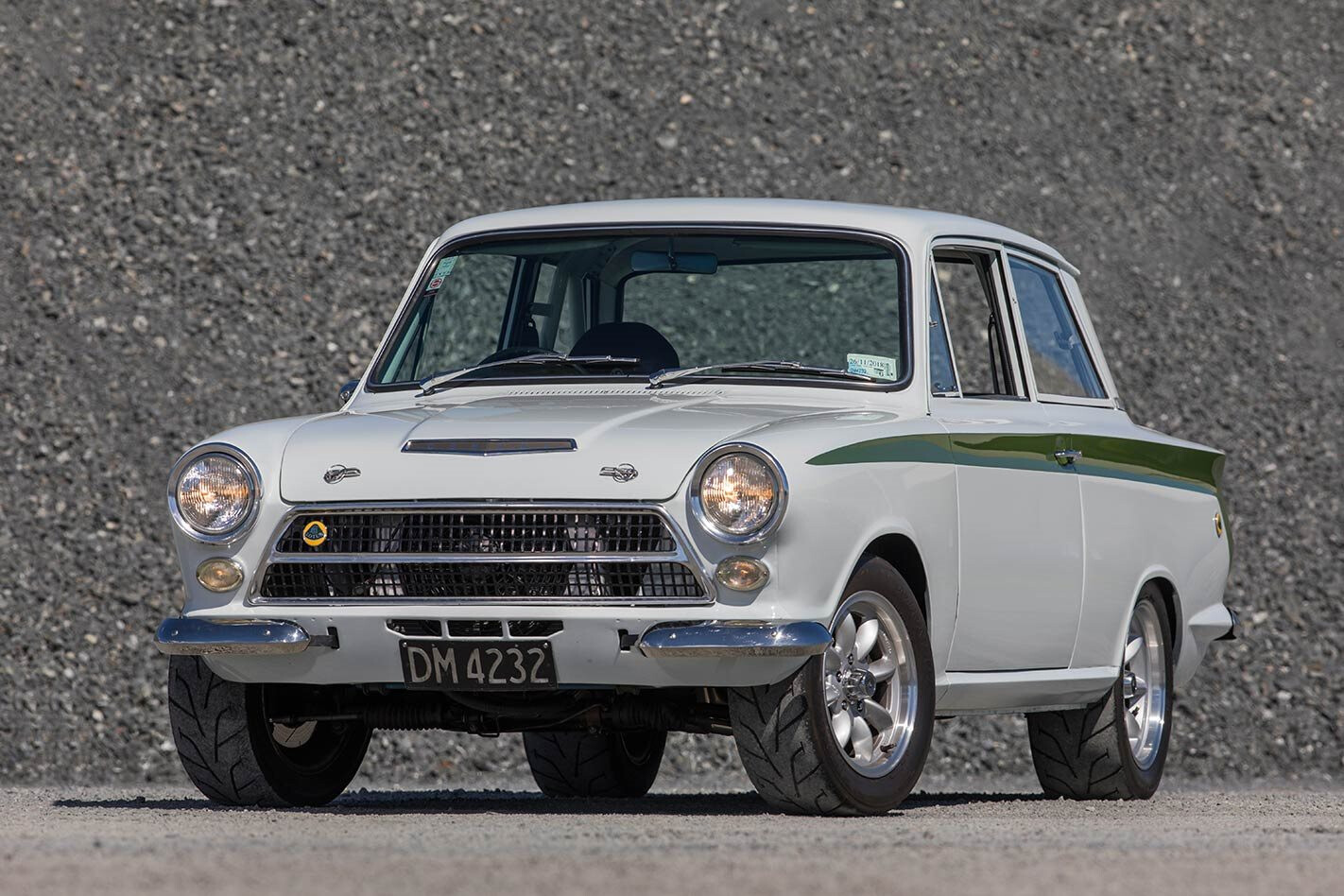
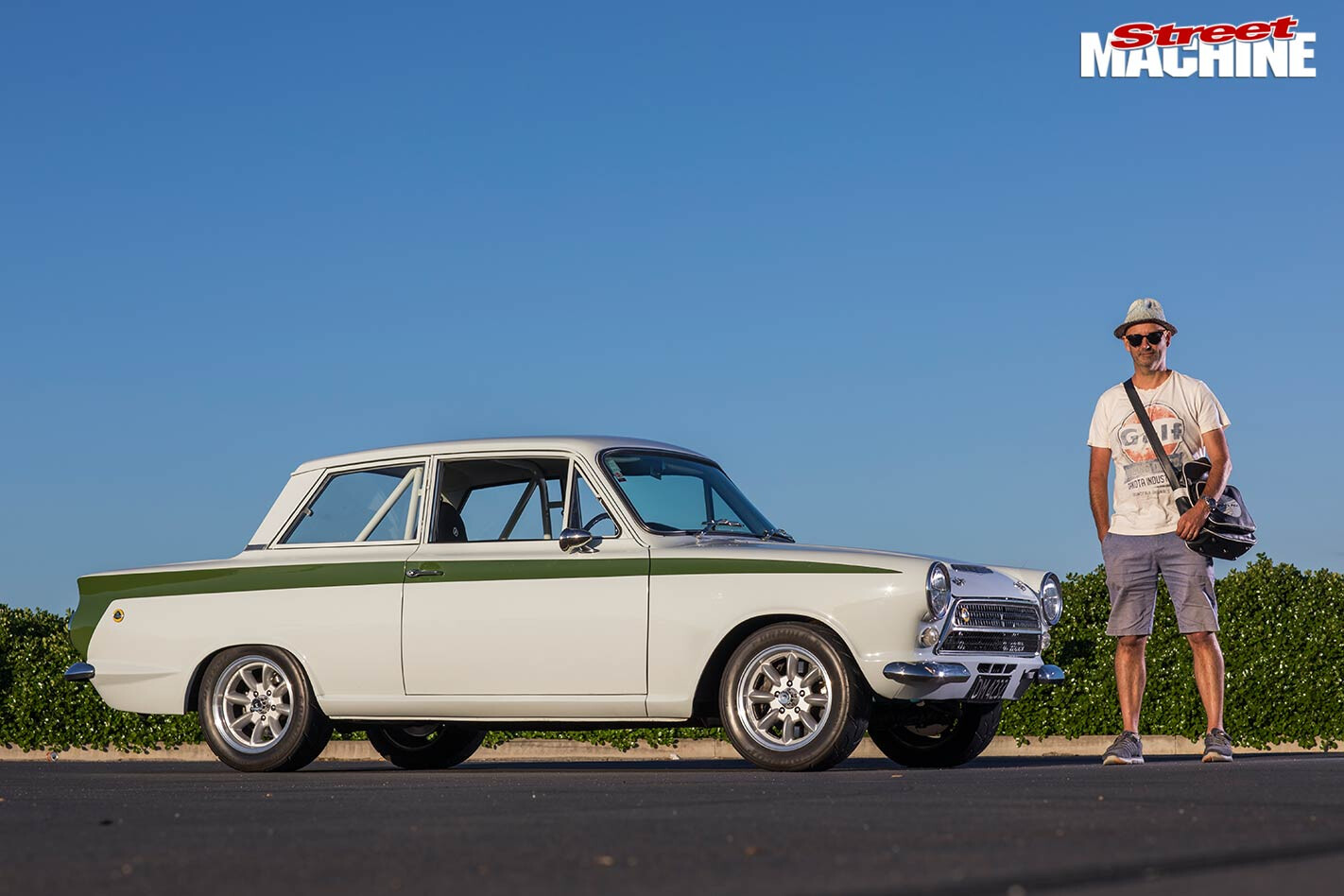
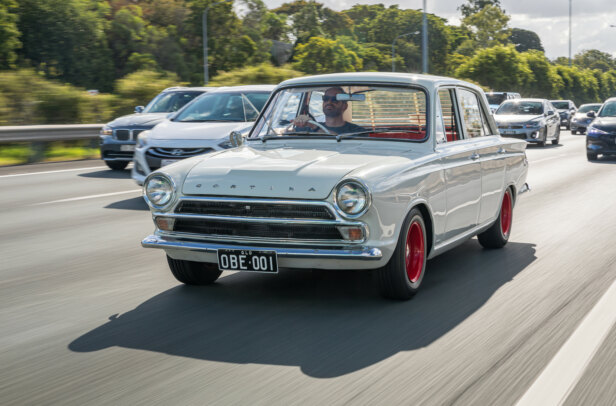
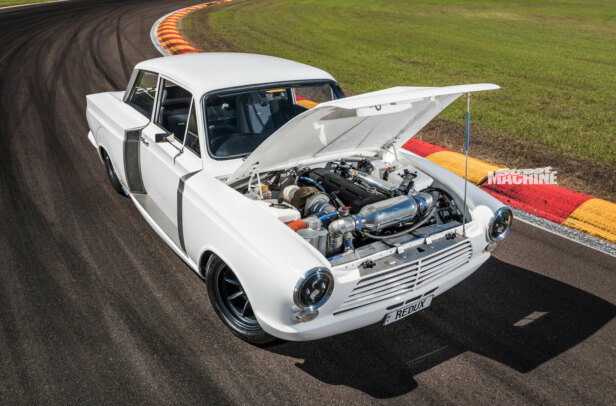
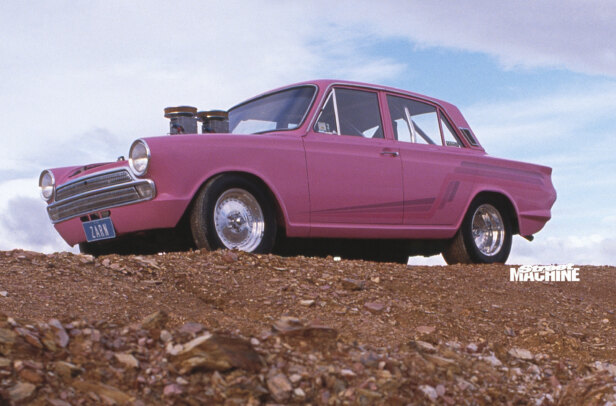
Comments